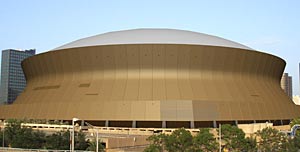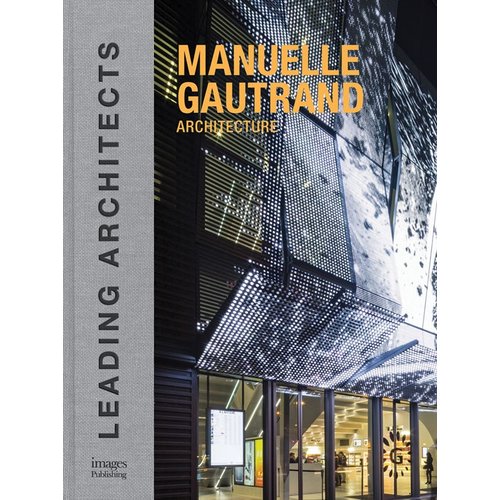Superdome's New Skin is Tougher Than Pig Skin
In deciding how to repair the outside of the Louisiana Superdome in New Orleans, a local design team faced a challenge of time and engineering. Locals love the bronze hue of aluminum panels that clad the arena’s curvy walls, but Hurricane Katrina had blown off some of those panels. Could the architects make repairs without stamping on incongruously shiny bits? Or, could they replace the entire skin without cheapening the dome’s resilient look?



Images courtesy Trahan Architects
The Louisiana Superdome’s steel skin is being replaced with new aluminum panels that will match its existing bronzy patina (top). An exploded sectional view of the new skin (middle). A view of the glass and curtain wall 3D components (above).
For Trey Trahan, principal of Baton Rouge’s Trahan Architects, the problem became one of reverse engineering. Working with New Orleans’s Billes Architecture and Sizeler, Thompson, Brown Architects, he sought a panel that would be thick enough to withstand future storm damage and that would also bear patina similar to that of the original, ultra-thin panels that architects Curtis and Davis had specified during the Superdome’s construction in the early 1970s. But the real dilemma was that the hurricane blew off 15 to 20 percent of the panels, in random places, which had been held together by rivets. “If you take off one panel you have to take off everything above it, too,” Trahan explains. With a budget of just $200 million for construction, it seemed like the architects would only have funding to replace missing panels. That might have created a quilt-like a facade resembling a botched dental job, Trahan says, “so the decision was made to remove the whole skin.” That’s where the reverse engineering came in.
In the Modernist era, a panel’s color often drove a designer’s decisions. Curtis and Davis had thus picked a color first and then ordered a panel thin enough to match it. Today, though, architects tend to use insulated panels that control heat gain and improve energy performance, but which also create a chunkier surface with less vibrant color. Trahan’s team sought an insulated panel that could also match the Superdome’s tint. At first they considered painted steel panels manufacturer by the original supplier, but they decided that these would create too bulky a silhouette and glare on sunny days. Instead they choose aluminum from a difficult manufacturer.
The architects received an aluminum sample in mid-February and devoted hours, Trahan says, to experimenting with how to bathe it in a chemical mix so that it would acquire the necessary patina. By the end of March, they settled on a panel and formula they felt could match the Superdome’s existing hue while improving its energy performance with a sprayed-on foam insulation backing. Most important, the new panels will affix to the surface without rivets, allowing repairs and orderly fading. “Now when a panel is damaged you’re not going to have to take every one above it off,” Trahan says, “and the anodized color is going to last much longer.” Construction should begin in January 2009 and finish by the end of that year.




Post a comment to this article
Report Abusive Comment